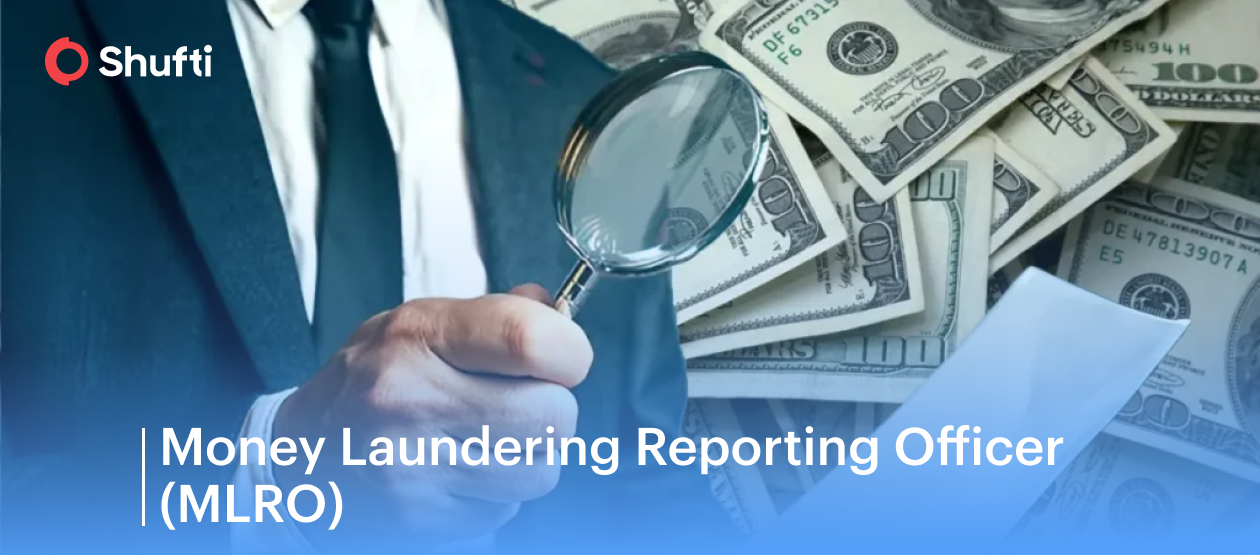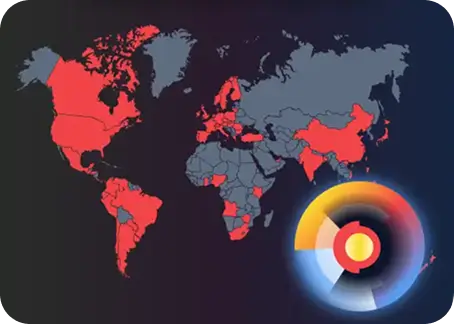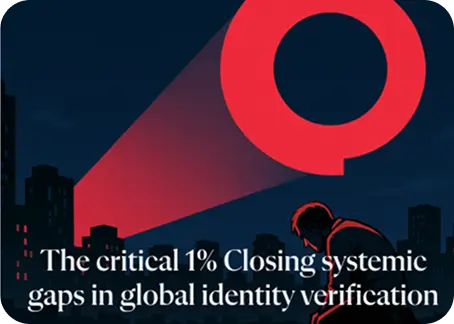Money Laundering Reporting Officer (MLRO)

One of the most alarming challenges to both international security and business integrity is financial crime. Whether it is money laundering across borders or funding of terrorism, this type of operation not only destabilizes the economies but also brings in distrust in financial institutions. In the modern globalized world of complicated regulations, digital assets, and global trade, Anti-Money Laundering (AML) compliance is not just an option but a necessity.
The Money Laundering Reporting Officer (MLRO) is considered to be at the center of every successful AML program. This role aims to help in closing the divide between the regulatory provisions and actual business practices to enable organizations to identify, report, and resolve suspicious activities before turning them into legal or reputational debacles.
What is an MLRO?
An MLRO (Money Laundering Reporting Officer) is a skilled compliance officer who is in charge of managing the anti-money laundering and counter-terrorist financing (CTF) efforts of an organization.
- In the United Kingdom, the role is a statutory requirement of the Money Laundering Regulations 2007 in Section 59, where all regulated firms are required to designate an MLRO.
- Financial Action Task Force (FATF) Recommendation 18 mandates financial organizations to appoint a compliance officer at the management level to ensure that every step aligns with the AML and CTF regulations.
- Regulators around the world, including the Financial Conduct Authority (FCA), the Financial Crimes Enforcement Network (FinCEN) of the U.S, and the Financial Action Task Force (FATF ), give structures on which the MLRO role is based.
Simply stated, the MLRO is in charge of compelling the business to adhere to AML regulations, keeping track of suspicious activities, and disclosing any questions to the corresponding authority, including the National Crime Agency (NCA) in the UK.
Why Does an MLRO Matter?
According to the United Nations Office on Drugs and Crime (UNODC), money laundering comprises 2–5% of global GDP ($800 billion). In the absence of robust compliance systems, criminals take advantage of loopholes in the finance, real estate, crypto, and trade sectors.
They not only secure businesses by shielding companies against expensive litigation and reputational damages, but also defend society by interrupting financial channels associated with terrorism, fraud, and trafficking, and enhance customer confidence by being responsible. More importantly, they make sure that firms are in compliance with the regulatory demands, which prevents harsh sanctions and penalties.
In essence, the MLRO is a watchdog and a guide that prevents financial crime. While business goals are important, MLRO ensures that they can never take precedence over compliance obligations. The MLRO’s role is to make compliance processes efficient so they support the business rather than hinder it.
Core Responsibilities of an MLRO
The MLROs carry wide-ranging duties that balance compliance, strategy, and oversight. MLROs’ key responsibilities are:
1. Risk assessment and management
The reporting officer recognizes and analyzes the risks of financial crime unique to the business, based on customer, product, delivery channel, and jurisdiction-related data. They adopt a documented risk-based approach (RBA) to ensure that enhanced controls target areas of greater risk, whereas normal activity is given proportionate attention to bring AML/CTF compliance in line with business realities.
2. Monitoring & Reporting
The Compliance lead supervises continuous monitoring, tracking of transactions, screening, and fraud detection in order to identify any suspicious patterns in a short period of time. Once suspicion passes the legal threshold, they organize and submit timely Suspicious Activity Reports (SARS) to the competent authority (e.g, the NCA in the UK) and make sure they have internal audit trails of every decision made.
3. Policy Development & Implementation
The designated officer develops, revises, and implements AML/CTF policies, procedures, and controls that are consistent with the existing law and guidance. This includes operationalizing Know Your Customer (KYC) and Know Your Business (KYB) requirements, embedding clear workflows, approvals, and record-keeping to make compliance measurable and repeatable.
4. Customer Due Diligence (CDD)
They ensure robust identity verification and risk assessment at onboarding and throughout the customer lifecycle. In the case of more risky relationships, e.g., politically exposed persons (PEPs), more complicated ownership arrangements, or more risky geographies, the MLRO should require more stringent due diligence (EDD), extra verification, and increased continuous monitoring.
5. Training & Culture Building
The nominated officer provides role-based AML training and refreshers, which are tailored and transform policy into practice. They foster the culture of employees noticing red flags and intervening before they develop regulatory violations by encouraging accountability, clear escalation routes, and speak-up methods.
6. Regulatory Liaison
The MLRO is the main communication point of the organization with the regulators and law enforcement, and he handles the inquiries, inspections, and requests of information. They report monthly to the board and senior management, summarizing the risk exposure, SAR, control effectiveness, and remediation plans to facilitate informed oversight.
What is MLRO in Banking?
In banking, a Money Laundering Reporting Officer (MLRO) is the senior compliance lead responsible for preventing financial crime. They oversee AML systems, monitor transactions, and report suspicious activity to regulators. By doing so, the MLRO protects the bank’s integrity, ensures compliance, and prevents misuse of its services for money laundering or terrorist financing.
Challenges Faced by MLROs
Despite their significance, MLROs have a lot of obstacles:
- The AML laws are constantly evolving worldwide, which expands MLRO duties to adapt policies, reassess risks, and keep businesses compliant
- Automated monitoring systems that lack contextual understanding often generate a high volume of false alerts, making MLRO’s job harder.
- The problems facing mid-sized firms include using old systems and having few compliance staff members.
- Cryptocurrency, shell companies, and AI-based fraud are used by criminals to evade old-fashioned control methods, creating challenges for MLRO, prompting them to keep a close eye on evolving fraud typologies.
- Poor system integration prevents MLROs from gaining a complete view of the organization’s compliance, limiting their ability to know whether controls are sufficient to mitigate overall risk..
Global Relevance of MLROs
Financial crime is also changing its landscape very fast, and AML measures are keeping up with that change. Regulators are increasing regulation of crypto exchanges, wallets, and DeFi, and the increasing analytics detect with greater accuracy. There are mounting demands to have transparency in the ownership of shell companies, and international organizations such as FATF are leading the way to uniformity. The concept of compliance is also spreading to new events, such as environmental and sustainability-related crimes. For MLROs, this means constantly adapting strategies and controls to meet emerging risks and shifting regulatory expectations.
Final Thoughts
The Money Laundering Reporting Officer (MLRO) is an important figure when it comes to protecting the business and society against financial crime. MLROs can keep organizations a step ahead of criminals by making sure that they have robust AML compliance, enforcing due diligence, and using advanced technologies.
The duties of the MLRO are going to increase as financial crime becomes more advanced, with advances in crypto laundering and AI-assisted fraud. Companies that invest in effective compliance leadership nowadays not only ensure that they are not fined and haven’t damaged their company’s reputation, but also create a healthier and more open international economy.



